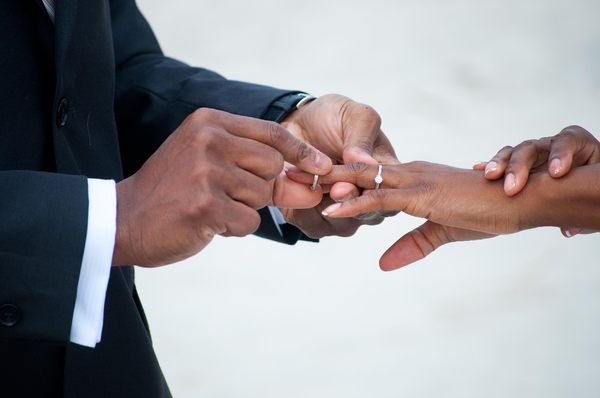The mystery of wedding veils

Planning her big day has not been easy for Wendy Kairu. She just wants to wear a jumpsuit and a head band instead of the usual wedding gown and veil for her wedding. Her parents and church would hear none of it.
“They are saying that it’s against traditions and that I have to wear a veil, of which I don’t think it is necessary since times have changed,” she laments.
It was common for brides to walk down the aisle wearing a sweeping white dress and matching veil. But nowadays modern brides, are changing the rules and are ditching the veils for flower crowns, bridal hats or bedazzled headbands.
The veil is the oldest part of the bridal ensemble. It dates back to ancient times when people “wrapped brides from head to toe to represent the delivery of a modest and untouched maiden. The veil also “hid her away from evil spirits who might want to thwart her happiness.”
According to psychologist and relationship expert Chris Hart, these customs go back thousands of years ago.
“While widely accepted as a beautiful bridal accessory, most women don’t understand the history of wedding veils. It’s not just a fashion choice. Although the veil’s history varies based on who you ask, most experts agree that you can trace its roots back to Middle East or mediaeval Europe. One of the overriding beliefs that people had was that a woman was vulnerable, especially when she leaves her father’s house, which meant she needed protection. They thought that all manner of evil spirits would attack her on her wedding day. That’s where the veil came in,” he explains.
Chris adds that the bride would wear the veil to make it difficult to spot her.
Bad luck
“She actually had brides’ maids who dressed like her to confuse the evil spirit. They would scatter flower petals on the ground to keep away the evil spirits. This is how the ‘three times a bridesmaids, never a bride’ saying came from since it was believed that it was the brides maid who would be jinxed – people believed that she would have picked some of the evil spirits making her unlucky,” he says.
The veil also served as a method of shielding the bride’s face from her future husband, especially in the cases of arranged marriages. It was used to obscure the bride’s features and not until the ceremony was over did the groom could lift it up. This was mainly to ensure the groom might not back out from the deal in case he was not satisfied with her appearance. Superstition has it that it is bad luck for the groom to see the bride prior to the wedding. A veil hiding her face also ensured that the groom would not see his soon-to-be-betrothed up until the ceremony.
Veils also have significance in certain religions and cultures. For example, in the Jewish religion the bridal veil plays an important role in the Bedeken ceremony, where the groom covers the bride’s face with her veil. This act is a nod to the Biblical story of Jacob, who was tricked into marrying his intended Rachel’s sister Leah, who was disguised with a veil. At the Bedeken, the groom is required to “check” and make sure he is marrying the correct person.
Having become a master of ceremony in many weddings, Kenneth Ndichu Otieno aka MC Head boy has witnessed brides being told not to walk down the aisle without a veil. In Christian religion, the meaning behind the veil at first symbolised modesty and obedience. As time passed by, it followed suit when white bridal gowns were worn to signify chastity. And by lifting up the bride’s veil, the groom could state his “possession” of his wife.
“People put on veils to hide the bride and in some churches, it’s to signify purity. Once the pastor allows the groom to unveil his bride, it is like he has been given permission to now know the bride sexually,” he says.
Tradition versus modern
Symbolically, the veil would therefore mean the couple have not known each other sexually. “For cohabiting couples with children, some churches would tell the bride not to wear the veil as they have already known each other. Nowadays, some churches are liberal and brides can opt to wear a veil or not,” he observes.
In the Kikuyu culture, the veil didn’t have a lot of meaning other than being used to hide the bride during dowry ceremonies. The groom is supposed to find his veiled bride who is accompanied by her friends, also veiled.
“While in the past the bride would be covered in animal skin, presently she is covered in lessos, during Kikuyu traditional wedding ceremony. It’s usually a test for the groom to find his bride and if they fail to recognise her, there is usually a heavy fine,” explains Kikuyu elder Wawerû wa Thuku aka Wanjambi.
Nowadays, the veil may no longer has it superstitious affiliations and is instead embraced for its association with bridal accessories which can “top off” the bride’s outfit. The veil, he says, is a beautiful fashion ensemble and makes for amazing wedding photos. A wedding veil, Ndichu says, can transform your bridal look, adding that extra wow factor to your big fay. A lot of women say it’s the finishing element to their aisle style that makes them feel like a bride-to-be.












